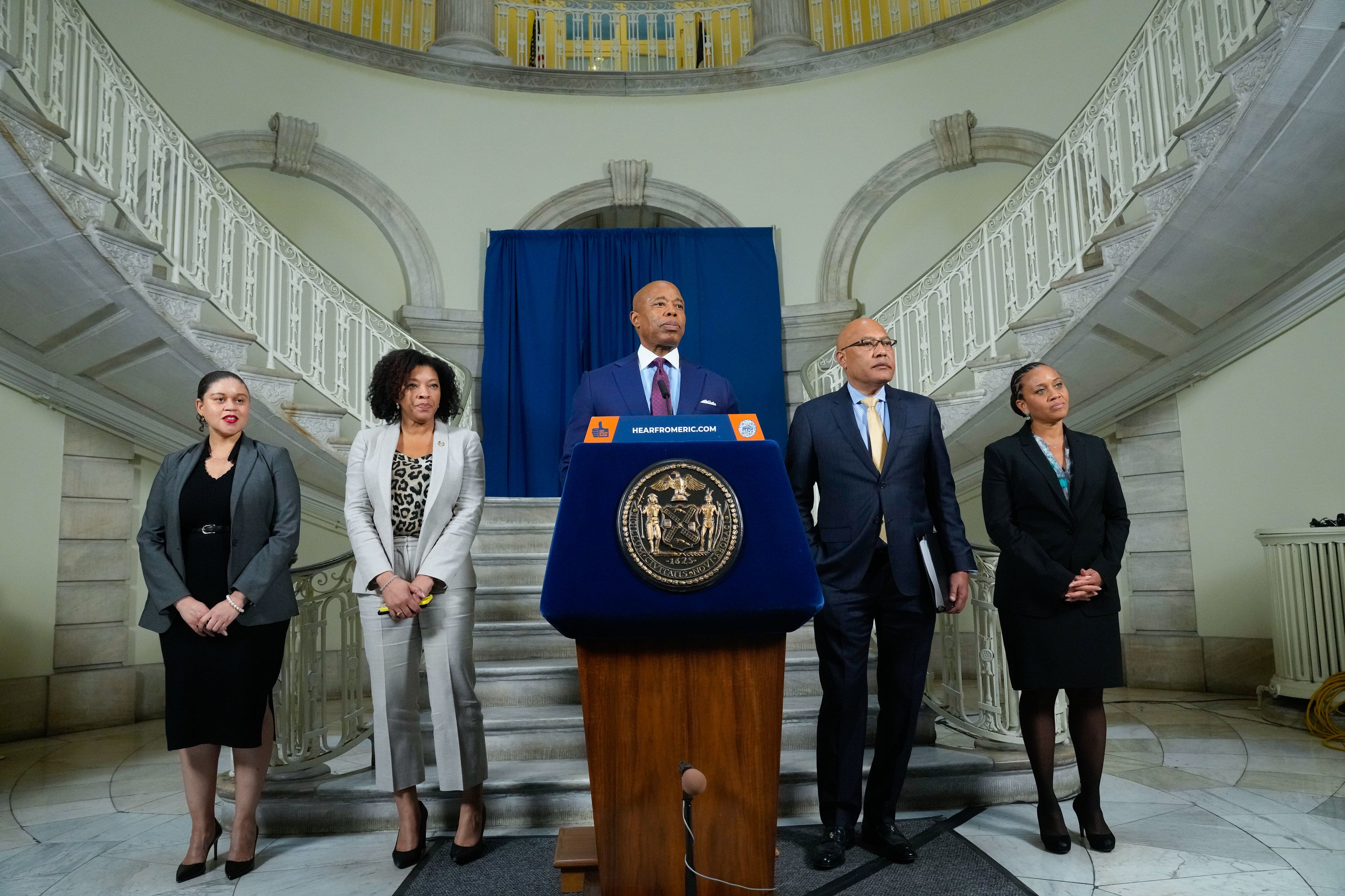Chalkbeat is a nonprofit news organization covering public education in communities across America. Sign up for Chalkbeat New York’s free daily newsletter to keep up with NYC’s public schools.
The city’s education department budget would drop by nearly $960 million next school year under a more detailed budget proposal released by Mayor Eric Adams on Wednesday, though city officials did not offer specifics about the impact on individual campuses.
Two-thirds of that cut, or $652 million, is the result of Adams’ decision to reduce the city’s contribution to the education department. Another $297 million is from a drop in federal funding, which is drying up as pandemic relief programs end.
Part of the city’s cut is tied to a mandate from the mayor earlier this month calling on city agencies to cut spending, including at the education department. That raised questions about whether schools would take a hit, but on Wednesday, Adams vowed that this specific cost-saving measure “will not take a dime from classrooms.”
Instead, that reduction — totaling $325 million — will largely come from recalculations on how much the city spends in fringe benefits, such as health insurance for teachers. (Officials emphasized this would not result in a loss of benefits or other services.)
“We had to make tough choices in this budget,” Adams said Wednesday. “We had to negotiate competing needs. We realize that not everyone will be happy but that is okay because that is how you get stuff done.”
The education department’s operating budget would total about $30.5 billion next year under the mayor’s plan, down by about 3%.
Some of the cuts were previously announced, including the elimination of a planned expansion of prekindergarten for 3-year-olds. Other impacts of the cuts may come into focus in the coming days as experts and journalists pore over reams of budget documents, which were released late Wednesday afternoon.
Adams has argued school budgets should reflect falling enrollment, but city officials declined to say what overall change they expect to individual school budgets next year. That question is likely to draw intense scrutiny after the City Council was heavily criticized last year for approving a budget that resulted in cuts to many campuses.
After the pandemic hit, Mayor Bill de Blasio used federal relief money to keep school budgets steady even as enrollment plunged. But as the spigot of federal money is drying up, Adams has started reducing budgets to line up with the number of students enrolled at each school, resulting in cuts on the majority of campuses. (Since the start of the pandemic, enrollment dropped about 11% in K-12.)
Next year, Adams plans to use $160 million of federal money to avoid deeper cuts to school budgets. Officials anticipate a much smaller enrollment decline than in recent years, which could insulate schools to some degree.
The budget is not final and must still be negotiated with the City Council. A final deal is due by July 1.
The proposed budget also includes funding for various other items, including services that advocates had been pushing for the mayor to include. Those are:
- $3.3 million for keeping a chunk of the city’s new shelter-based coordinators, who are supposed to help families and children who are homeless navigate school enrollment and transportation. The funding for these coordinators was set to run out this June.
- $9 million for a telehealth program for high school students who need mental health support.
- $2 million for training up to 1,000 teachers in climate education.
The mayor’s budget received a mixed reception from advocates, union officials, and budget experts. Kim Sweet, executive director at the nonprofit Advocates for Children, praised the funding for shelter coordinators, but raised alarms about broader spending cuts — including to a program that provides extra mental health services to students at 50 high-need high schools, and another that provides free child care for undocumented families.
“We are concerned that the Mayor is proposing to cut hundreds of millions of dollars from our City’s schools at a time when there are so many unmet needs,” Sweet said in a statement, including high rates of chronic absenteeism and shortages in services for students with disabilities.
Still, Adams has argued that the city needs to tighten its belt due to costs associated with serving an influx of asylum seekers and potential economic headwinds.
Ana Champeny, vice president for research at the budget watchdog group Citizens Budget Commission, said her organization is worried the city isn’t properly planning now for big budget shortfalls that are expected in future years. That includes hundreds of millions of dollars of federal relief funding for the education department that will disappear in 2024 and could leave several programs and services unfunded.
“From our point of view there is still a major challenge fiscally for the city that’s not far off,” Champeny said. “We really should be taking action now.”
Reema Amin is a reporter covering New York City public schools. Contact Reema at ramin@chalkbeat.org.
Alex Zimmerman is a reporter for Chalkbeat New York, covering NYC public schools. Contact Alex at azimmerman@chalkbeat.org.





